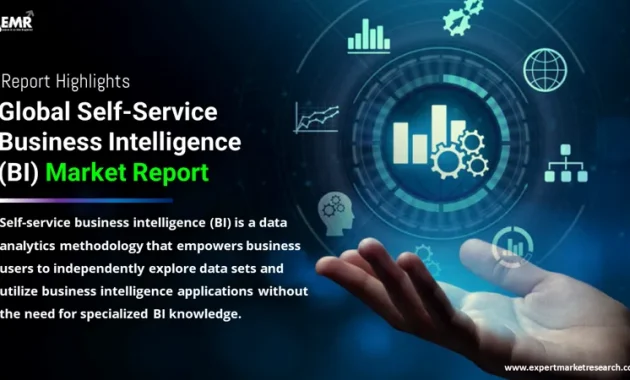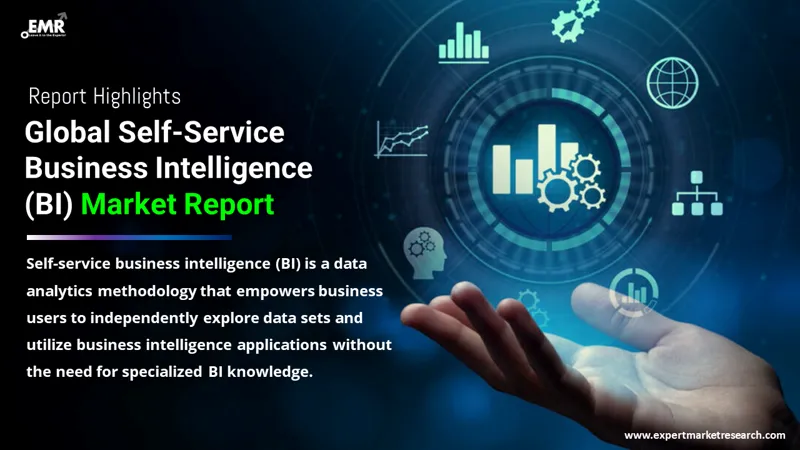
Uncover Trends with Self-Service Business Intelligence Software: A Data-Driven Revolution
In today’s rapidly evolving business landscape, data is the new currency. Organizations that can effectively harness and interpret their data are positioned for success. This is where self-service business intelligence (BI) software steps in, empowering users to analyze data and uncover valuable trends. This article delves into the transformative power of self-service BI, exploring its benefits, features, and implications for modern businesses.
The Rise of Data-Driven Decision Making
Gone are the days of relying solely on intuition and gut feelings. Data-driven decision-making has become the cornerstone of strategic planning and operational efficiency. Businesses are generating unprecedented amounts of data, from customer interactions to sales figures. The challenge lies in extracting meaningful insights from this data deluge. Self-service business intelligence software provides the tools necessary to meet this challenge head-on.
What is Self-Service Business Intelligence?
Self-service business intelligence software is a type of BI that empowers business users, not just IT professionals or data scientists, to analyze data. It provides intuitive interfaces, pre-built dashboards, and easy-to-use reporting tools. This allows individuals to explore data, create visualizations, and generate insights without requiring extensive technical expertise. The goal is to democratize data access and analysis, enabling informed decisions at all levels of an organization.
Key Benefits of Self-Service BI
- Faster Insights: Users can quickly access and analyze data, reducing the time it takes to identify trends and make decisions.
- Increased Agility: Businesses can adapt to changing market conditions more effectively by quickly analyzing new data and adjusting strategies.
- Improved Collaboration: Data is readily available to all, fostering better communication and collaboration across departments.
- Reduced Reliance on IT: Business users can generate their own reports and analyses, freeing up IT resources for more complex tasks.
- Enhanced Data Literacy: The user-friendly interface encourages users to explore data and develop a deeper understanding of their business.
Essential Features of Self-Service BI Software
To effectively uncover trends, self-service business intelligence software typically includes a range of features:
- Data Connectivity: The ability to connect to various data sources, including databases, spreadsheets, cloud applications, and more.
- Data Visualization: Tools to create charts, graphs, and dashboards that present data in an easily understandable format.
- Data Preparation: Features to clean, transform, and prepare data for analysis.
- Interactive Dashboards: Customizable dashboards that allow users to monitor key performance indicators (KPIs) and drill down into data.
- Reporting and Analytics: Capabilities to generate reports, perform statistical analysis, and identify trends.
- Mobile Accessibility: The ability to access data and dashboards on mobile devices.
How Self-Service BI Uncovers Trends
Self-service business intelligence software empowers users to uncover trends in several ways:
- Trend Identification: By visualizing data over time, users can identify upward or downward trends in sales, customer behavior, or other key metrics.
- Anomaly Detection: The software can highlight unusual patterns or outliers in the data, alerting users to potential problems or opportunities.
- Correlation Analysis: Users can explore relationships between different variables to understand what factors influence business outcomes.
- Predictive Analytics: Some tools offer predictive analytics capabilities, allowing users to forecast future trends based on historical data.
Real-World Applications of Self-Service BI
The applications of self-service business intelligence software are vast and span across various industries. Here are a few examples:
- Retail: Retailers can analyze sales data to identify popular products, optimize inventory levels, and personalize marketing campaigns.
- Healthcare: Healthcare providers can analyze patient data to improve patient outcomes, optimize resource allocation, and identify areas for cost reduction.
- Finance: Financial institutions can analyze customer data to identify fraud, assess risk, and personalize financial products.
- Manufacturing: Manufacturers can analyze production data to improve efficiency, reduce waste, and optimize supply chains.
- Marketing: Marketers can analyze campaign performance, track customer engagement, and optimize marketing spend.
Choosing the Right Self-Service BI Software
Selecting the right self-service business intelligence software is crucial for success. Consider the following factors:
- Ease of Use: The software should have an intuitive interface and be easy to learn and use.
- Data Connectivity: Ensure the software can connect to your data sources.
- Features: Choose software with the features you need, such as data visualization, reporting, and analytics.
- Scalability: The software should be able to handle your current and future data volumes.
- Cost: Evaluate the pricing models and ensure the software fits your budget.
- Support: Consider the level of customer support offered by the vendor.
The Future of Self-Service BI
The future of self-service business intelligence software is bright. As data volumes continue to grow, the demand for easy-to-use and powerful BI tools will also increase. We can expect to see advancements in the following areas:
- Artificial Intelligence (AI) and Machine Learning (ML) Integration: AI and ML will be integrated into BI tools to automate data analysis, provide predictive insights, and personalize user experiences.
- Enhanced Data Governance: Data governance features will become more sophisticated to ensure data quality and security.
- Increased Collaboration: BI tools will become more collaborative, allowing teams to share insights and work together more effectively.
- Mobile BI Advancements: Mobile BI will become more powerful, allowing users to access and analyze data on the go.
Implementing Self-Service BI: Best Practices
Successful implementation of self-service business intelligence software requires careful planning and execution. Consider the following best practices:
- Define Clear Objectives: Establish clear goals for your BI initiative.
- Identify Data Sources: Determine the data sources you need to connect to.
- Choose the Right Software: Select the software that meets your needs.
- Provide Training: Train users on how to use the software.
- Establish Data Governance: Implement data governance policies to ensure data quality and security.
- Monitor and Evaluate: Regularly monitor your BI initiative and make adjustments as needed.
Overcoming Challenges in Self-Service BI
While self-service business intelligence software offers many benefits, there can also be challenges. These include:
- Data Quality: Poor data quality can lead to inaccurate insights.
- Data Security: Protecting sensitive data is crucial.
- User Adoption: Ensuring that users adopt and use the software.
- Data Silos: Integrating data from different sources can be challenging.
- Lack of Expertise: Users may lack the skills needed to analyze data effectively.
Conclusion: Embracing the Data-Driven Future with Self-Service BI
Self-service business intelligence software is transforming the way businesses operate. By empowering users to analyze data and uncover trends, organizations can make smarter decisions, improve efficiency, and gain a competitive advantage. As data volumes continue to grow, the importance of self-service business intelligence software will only increase. Businesses that embrace this technology will be well-positioned to thrive in the data-driven future.
Investing in self-service business intelligence software is an investment in the future. It empowers your team to make informed decisions. It facilitates better collaboration and drives business success. By selecting the right software and implementing best practices, you can unlock the full potential of your data and uncover the trends that will shape your future. Embrace the data-driven revolution and empower your organization with the insights it needs to succeed.
[See also: Related Article Titles]

